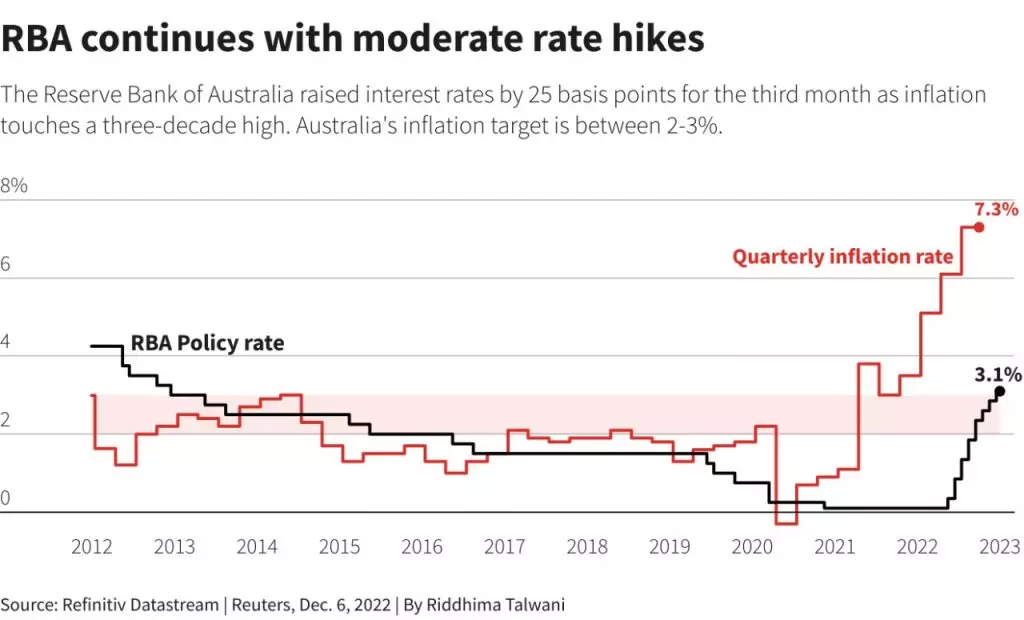Sydney December 6 2022: Australia’s central bank on Tuesday raised interest rates to a 10-year high and stuck with its projection that more hikes are needed, a stance taken as slightly hawkish by markets that were looking for signs of a pause in the near term.
Wrapping up its last policy meeting this year, the Reserve Bank of Australia (RBA) lifted its cash rate by 25 basis points to 3.1%, the eighth hike in as many months and bringing its rate increases to a hefty 300 basis points since May.
All 30 economists polled by Reuters had expected the RBA to go for another modest 25 basis point hike, its third in a row after a sucession of half-point hikes.

In a statement largely similiar to others of recent months, Governor Philip Lowe said the central bank’s board expects to increase interest rates further over the period ahead, although it is not on a pre-set course.
“The size and timing of future interest rate increases will continue to be determined by the incoming data and the Board’s assessment of the outlook for inflation and the labour market.”
Some economists had been looking for a change in the forward guidance by the central bank this time. A top central banker said in November that the board was nearer to the point where it might pause on rates.
However, the most aggressive tightening cycle in decades will pause at least until February, when the central bank next meets on policy after a year-end break, giving it time to assess the impact of the hefty cumulative increase in rates.
After the policy decision was released, the local dollar edged up to $0.6735, reflecting the slightly less dovish tone in the statement than markets had been looking for.
Markets have priced in more chances of a hike in February and nudged up the expected peak for interest rates to around 3.6% by July next year, from 3.5% before the decision.

“There is little in today’s statement that suggests the RBA have finished their rate hiking cycle,” said Sean Langcake, head of macroeconomic forecasting for BIS Oxford Economics.
“Given the tone of today’s statement, we continue to expect at least another 50 basis points of hikes to be delivered in early 2023.”
The central bank had previously indicated it wanted to slow down and assess the drastic moves’ effects on consumer spending, especially with a global recession looming.
It has also said it was willing to return to larger increases or to pause for a period, if needed.
Indeed, the labour market remains tight with the jobless rate matching five-decade lows in October at 3.4% and wage growth, which picked up in the September quarter to the fastest pace since 2013, expected to increase further in the months ahead.
However, there are signs the rate hikes may already have begun to cool the economy, with the monthly consumer inflation rate easing in October, although the recently launched data series does not include utility costs.
The quarterly inflation series is expected to peak at about 8% this quarter.
At the same time, the rate hikes already delivered will add more than A$1,000 a month in repayments to the average mortgage, a deadweight for a population that holds A$2 trillion ($1.3 trillion) in home loans.
Australian home prices fell for a seventh straight month in November, a drag on household wealth that would curb consumer confidence and consumption over the months ahead, although the pace of declines has started to moderate.










